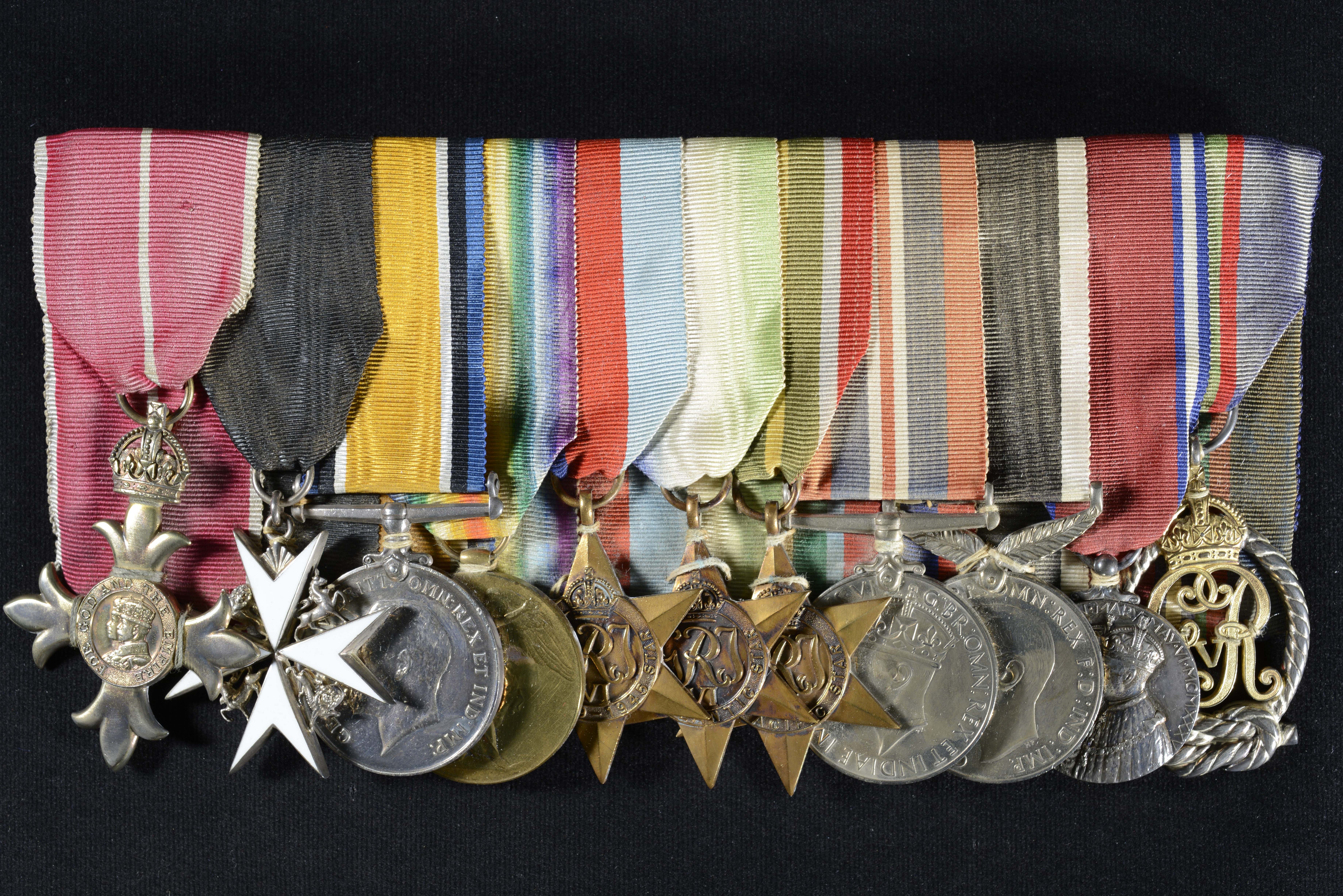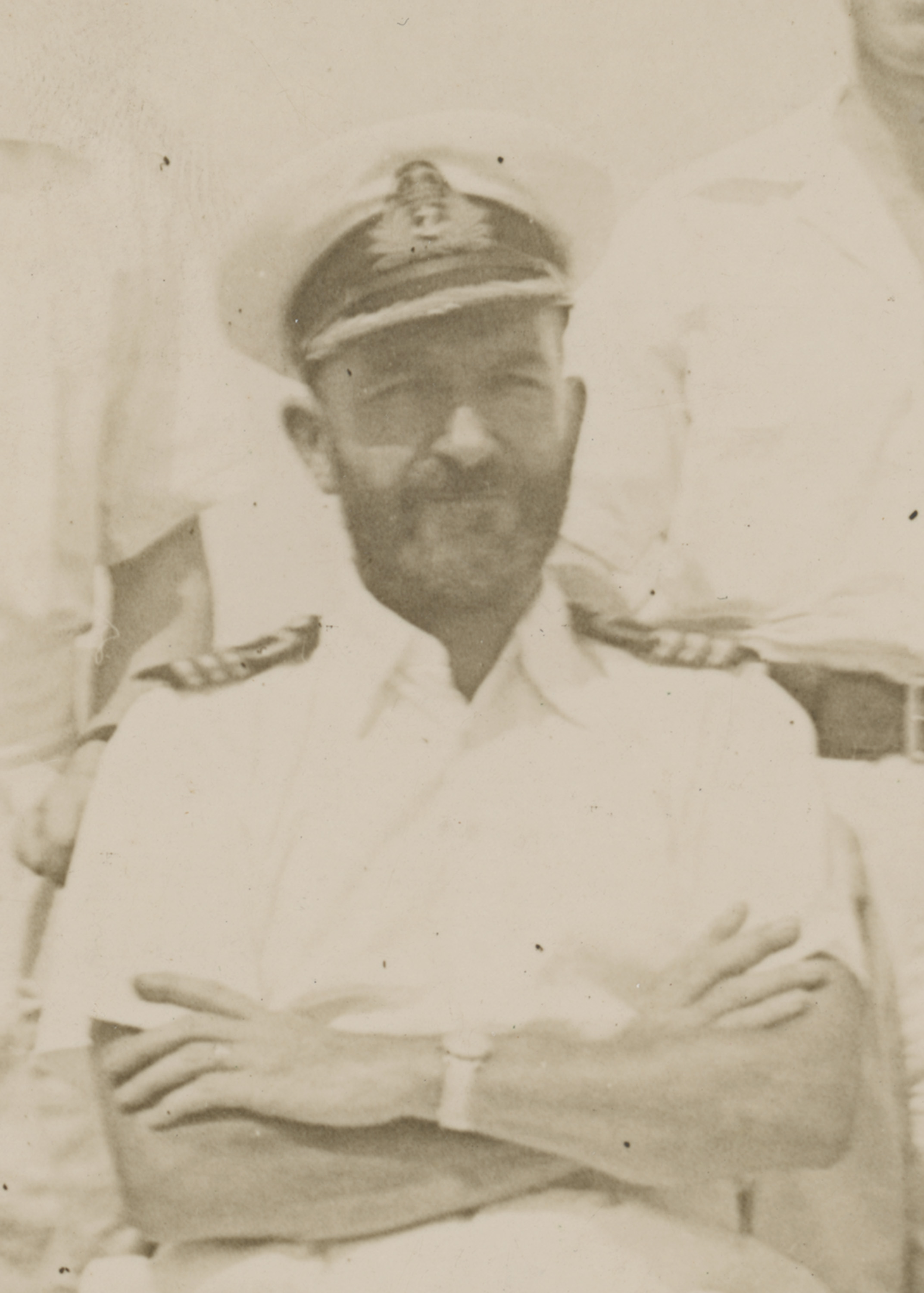

Display No. 6A
CORKILL, Harold Keith
Harold Corkill volunteered for service with the British Army during the First World War. After completing an officer cadet training course, he was commissioned in the Royal Field Artillery and served in France with the 6th British Division until he was wounded in 1918.
After the war, Corkill completed his studies in medicine in Edinburgh, Scotland. He then held a position as a ship’s surgeon in a merchant ship trading to the West Indies in 1923-24. Corkill then had several appointments as an Assistant Surgeon in the United States and in Wellington Hospital, New Zealand.
In 1928 Corkill joined the Wellington Division of the Royal Naval Volunteer Reserve (RNVR) as Principal Medical Officer and served overseas on a number of occasions including in the Red Sea in HMS Diomede during the Abyssinian Crisis. At the outbreak of the Second World War, Corkill was mobilised and posted to HMS Leander which was operating in the Red Sea and Indian Ocean. He was then appointed Director of Naval Medical Services for New Zealand and served ashore in HMNZS Philomel and attained the rank of Surgeon Captain. Corkill then spent several years at sea posted to HMNZ Ships Achilles, and Gambia before being demobilised at the end of the war.
Awarded medal(s)
Medal Description [Left to Right]:
Officer of the Most Excellent Order of the British Empire (OBE)
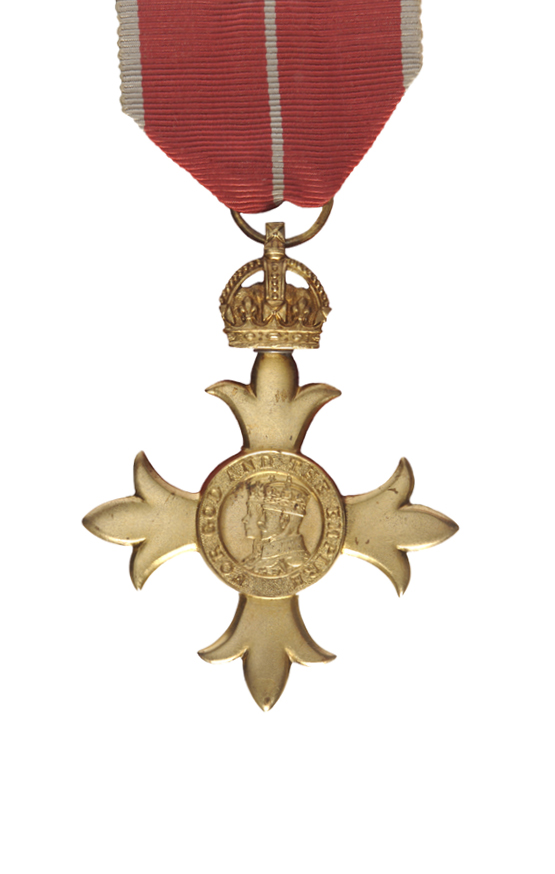
Established by King George V in 1917 for services to the British Empire. The Order has five classes: Knight and Dame Grand Cross (GBE), Knight Commander and Dame Commander (KBE / DBE), Commander (CBE), Officer (OBE) and Member (MBE). The OBE badge is in silver-gilt. In December 1918, the Order was split into two divisions: a Civil Division for civilian recipients; and a Military Division for awards to commissioned officers and warrant officers for distinguished service in action. The insignia of the Civil and Military Divisions is distinguished only by the ribbon, the military award having a narrow central stripe. Prior to the introduction of the New Zealand Order of Merit in 1996, the Order of the British Empire was the most common honour awarded to New Zealand military personnel.
Officer of the Order of St John
Awarded to recognise both conspicuous and long service with the Venerable Order of St John and its subsidary organisations. The ribbon is plain black watered silk. When ribbons only are worn, a small Maltese Cross in silver is worn on the ribbon of all Grades of the Order to distinguish the ribbon against a dark background. This practice has been used since 1947.
The British War Medal

The British War Medal was instituted in 1919 to recognise the successful conclusion of the First World War (1914-1918). Its coverage was later extended to recognise service until 1920, recognising mine clearing operations at sea, and participation in operations in North and South Russia, the eastern Baltic, Siberia, the Black Sea and the Caspian Sea.
The Victory Medal
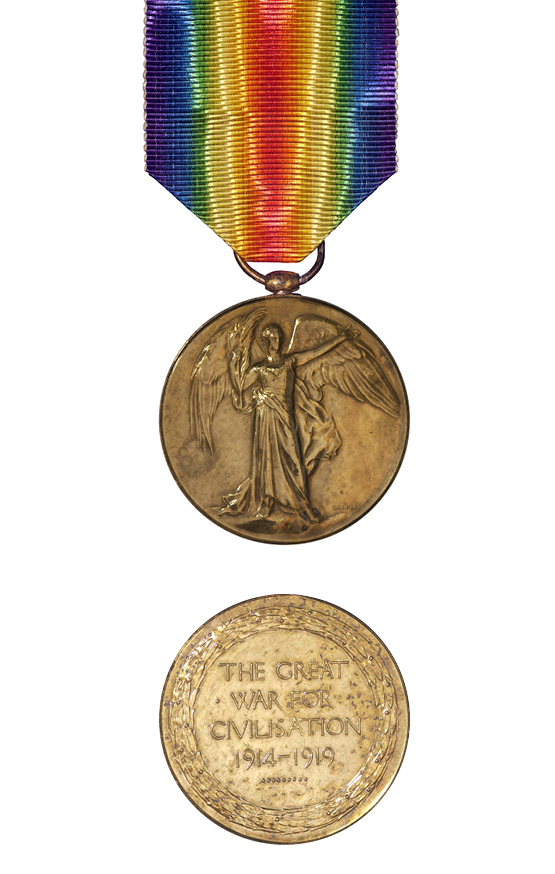
The Victory Medal was awarded in the First World War to all those who had already qualified for the 1914 Star or the 1914-15 Star, and to most persons who had already qualified for the British War Medal. The Victory Medal was awarded to all New Zealand troops serving overseas, except for those who arrived in Samoa after 30 August 1914 and those serving in Great Britain only. It has a unique double rainbow ribbon.
A bronze spray of oak leaves on the medal ribbon denotes that the recipient was Mentioned in Despatches during the period that the medal recognises. To be Mentioned in Despatches a member of the armed forces has had their name mentioned in an official report, written by a superior officer, and sent to a higher command. The report would describe the individual’s gallant or meritorious action in the face of the enemy.
The 1939-1945 Star

The 1939-45 Star is the first in a series of eight campaign stars instituted in 1945 to recognise service in World War Two. The ribbon has three equal vertical stripes of dark blue, red and light blue. The dark blue stripe symbolises the service of the Navy and the Merchant Navy, the red stripe symbolises the service of the Army, and the light blue stripe symbolises the service of the Air Force. The equal width bands represent the equal contributions of the three service arms towards victory. The ribbon was devised by King George VI. Two clasps could be awarded with this medal: ‘Battle of Britain’ and ‘Bomber Command’. Only aircrew would qualify for these clasps although a small number of Fleet Air Arm naval pilots flew for the air force and would be eligible for the ‘Battle of Britain’ clasp.
The Atlantic Star
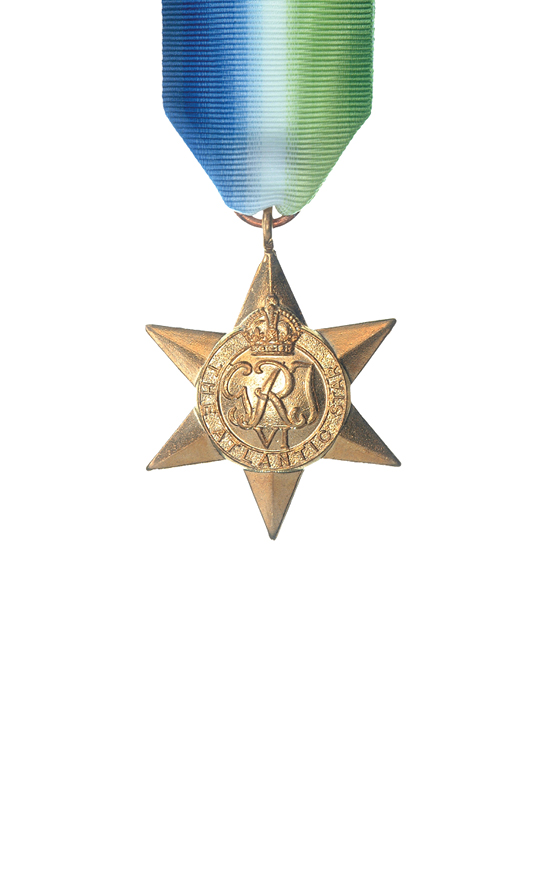
The Atlantic Star was awarded for service during the Second World War. It was instituted to commemorate the Battle of the Atlantic the longest continuous military campaign in the Second World War running from 3 September, 1939 – 8 May, 1945. Six months naval service or four months air service in the Atlantic, United Kingdom (‘home’) waters or North Russian waters was normally required. The ribbon is watered silk coloured blue, white and green, symbolising service in the oceans. Two clasps could be awarded with this medal: ‘France and Germany’ and ‘Air Crew Europe’. Personnel issued the Atlantic Star who then qualified for either the France and Germany and the Air Crew Europe Stars were awarded a clasp in respect of the second only (as only one clasp could be worn on the star).
The Pacific Star
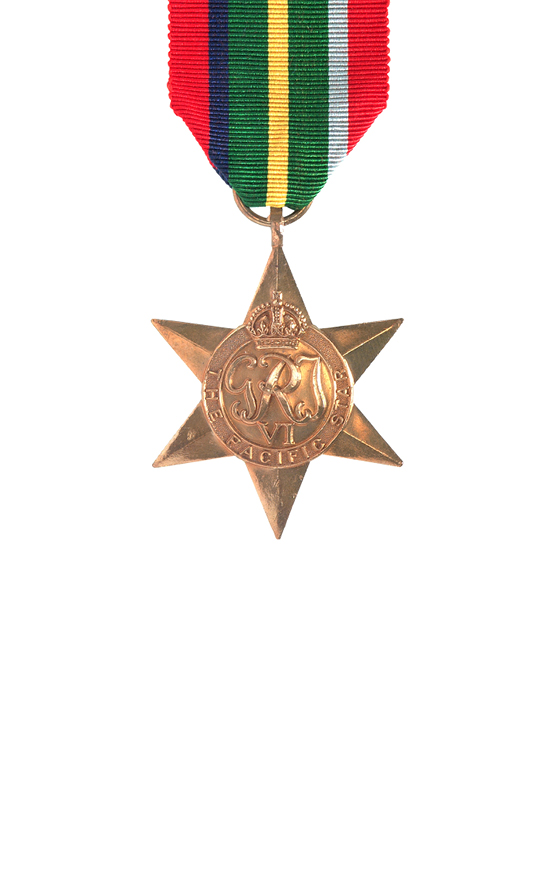
The Pacific Star was awarded in the Second World War for operational service in the Pacific between 8 December 1941 and 2 September 1945. This medal was also awarded for certain specified service in China, Hong Kong, Malaya and Sumatra: between 8 December 1941 and 25 December 1941 (for Hong Kong); between 8 December 1941 and 15 February 1942 (for China and Malaya); and between 8 December 1941 and 23 March 1942 (for Sumatra). The centre of the ribbon is dark green (symbolising the jungle) with a central yellow stripe (symbolising the beaches). On the outer edges are wide stripes of red (representing the Army), with narrow stripes of dark blue and light blue (representing the Navy and Air Force) between the stripes of dark green and red. A ‘Burma’ clasp could be awarded with this medal. Personnel qualifying for both the Pacific and Burma Stars were awarded the first star but only a clasp in respect of the second.
The War Medal 1939-1945

The War Medal 1939-45 was awarded across the British Commonwealth to all full-time members of the Armed Forces in the Second World War for 28 days service between 3 September 1939 and 2 September 1945, irrespective of where they were serving. The ribbon is the red, white, and blue of the (British) Union Flag. There is a narrow central red stripe with a narrow white stripe on either side. There are broad red stripes at either edge, the two intervening stripes being blue.
A bronze oak leaf on the medal ribbon denotes that the recipient was Mentioned in Despatches. To be Mentioned in Despatches a member of the armed forces had their name mentioned in an official report, written by a superior officer, and sent to a higher command. The report would describe the individual’s gallant or meritorious action in the face of the enemy.
The New Zealand War Service Medal
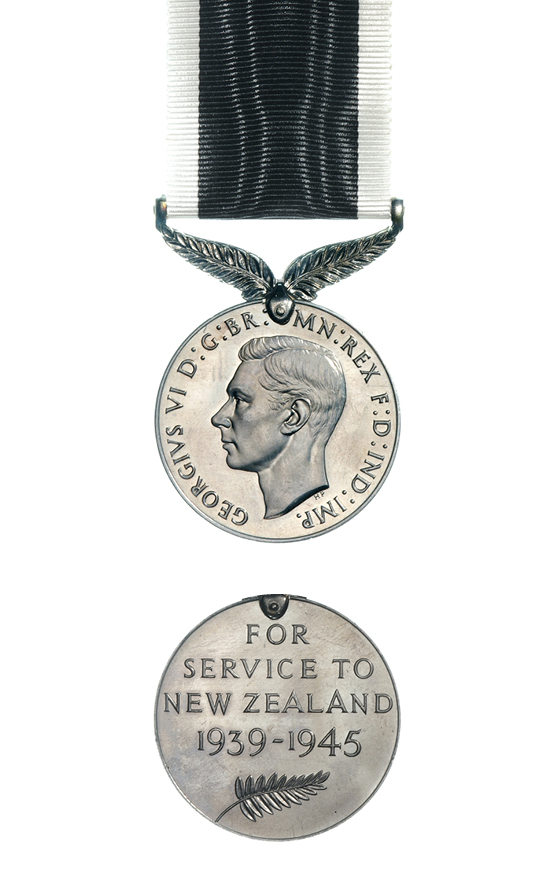
The New Zealand War Service Medal was awarded for 28 days’ full time service or six months’ part time service in the Second World War in any of the New Zealand Armed Forces including the Reserves, Naval Auxiliary Patrol Service, or Home Guard, between 3 September 1939 and 2 September 1945.
Jubilee Medal 1935
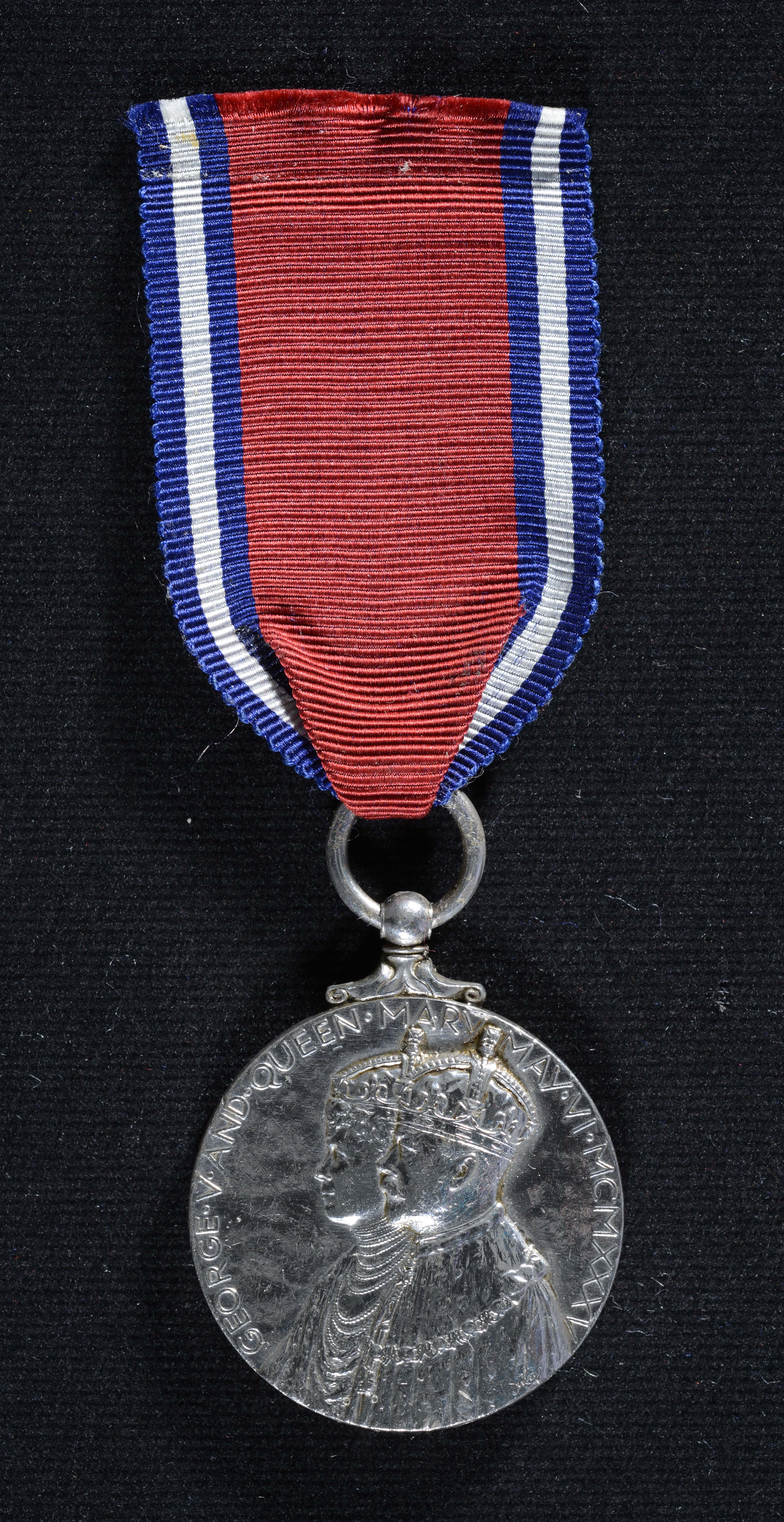
A commemorative medal instituted to celebrate the 25th anniversary of the accession of King George V.
Royal Naval Volunteer Reserve Decoration
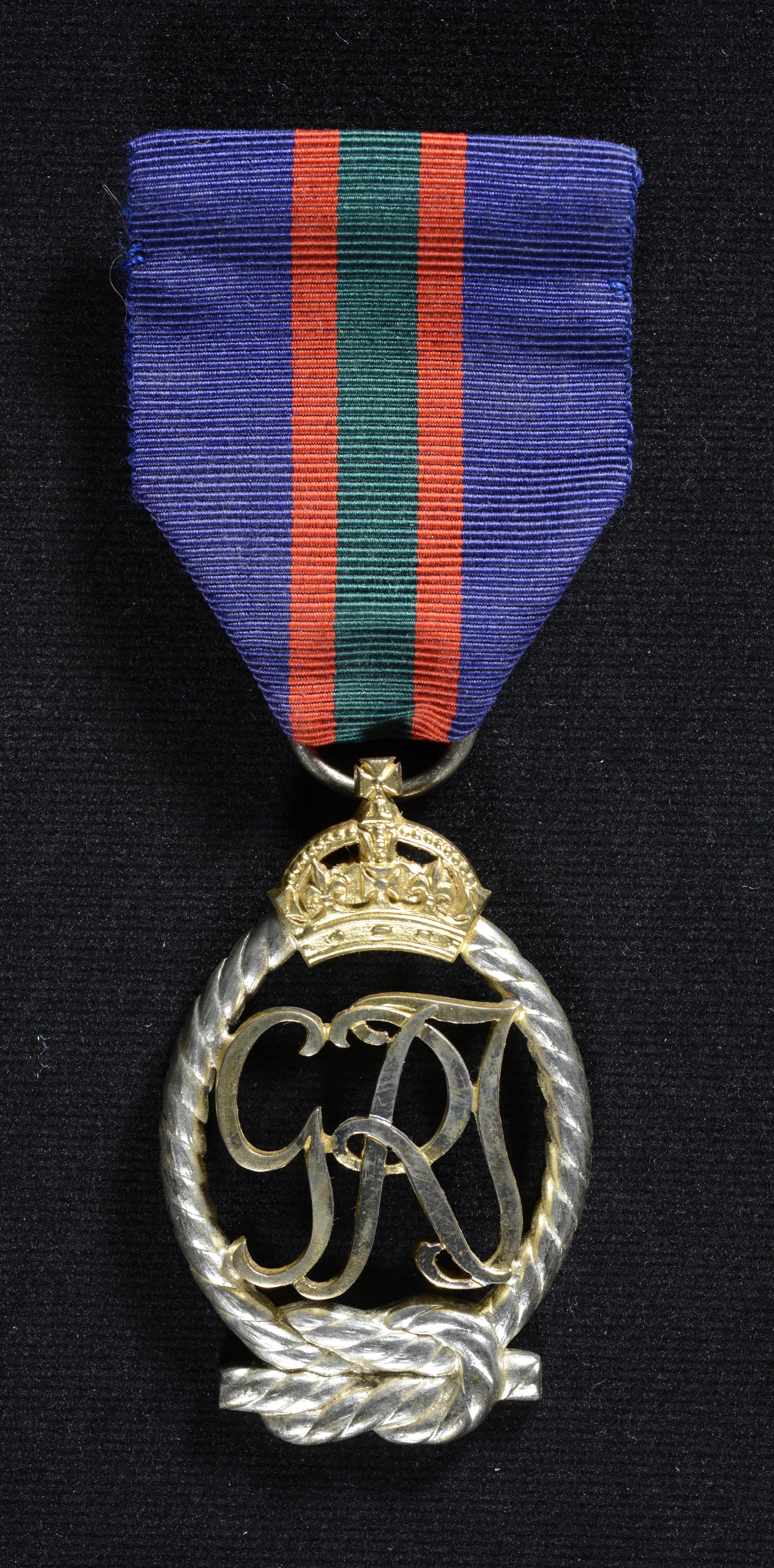
Instituted in 1908, the Royal Naval Volunteer Reserve Decoration was awarded to commissioned officers in the Royal Naval Volunteer Reserve after fifteen years of service; wartime service counting as double. Holders were entitled to the postnominal letters VD (until 1947) or VRD (after 1947). The original plain dark green ribbon was replaced with a blue, green and red striped version in 1919. The VRD was discontinued in the United Kingdom in 1966 but continued to be awarded in New Zealand, being instituted in 1985 as the Royal New Zealand Naval Volunteer Reserve Decoration with qualifying service backdated to 1977. The New Zealand VRD is the exact same design as the RNVR Decoration with the post 1919 striped ribbon. The ribbon colours are symbolic with blue representing the sea, red the Royal crimson and green which was the colour of the ribbon of the original Volunteer Officer’s decoration.

